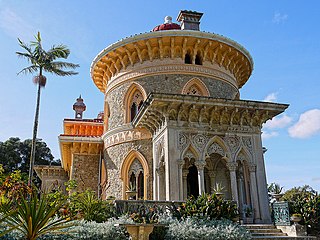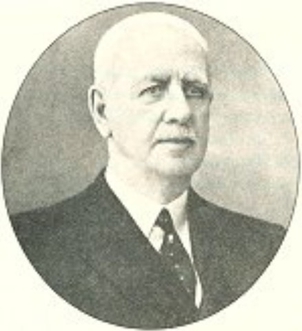
The culture of Portugal designates the cultural practices and traditions of the Portuguese people. It is rooted on the interactions between many different civilizations that inhabited the area during the past millennia. From prehistoric cultures, to its Pre-Roman civilizations, passing through its contacts with the Phoenician-Carthaginian world, the Roman period, the Germanic invasions of the Suebi, Buri and Visigoths, Viking incursions, Sephardic Jewish settlement, and finally, the Moorish Umayyad invasion of Hispania and the subsequent expulsion during the Reconquista, all have influenced the country's culture and history.

Cascais is a town and municipality in the Lisbon District of Portugal, located on the Portuguese Riviera. The municipality has a total of 214,158 inhabitants in an area of 97.40 km2. Cascais is an important tourist destination. Its marina hosts events such as the America's Cup and the town of Estoril, part of the Cascais municipality, hosts conferences such as the Horasis Global Meeting.
Filipe Pinto Basto Soares Franco was the 46th president of Sporting CP, one of Portugal's biggest comprehensive sports clubs, second child and second son of Rui Guedes Soares Franco and Isabel Maria da Câmara Ferreira Pinto Basto.

Association football, the most popular sport in Portugal, has a long and storied history in the country, following its introduction in 1875 in cities such as Funchal, Lisbon, Porto and Coimbra by English merchants and Portuguese students arriving back home from studying in England. This led to the establishment of local clubs dedicated to the practice of the sport.
Jorge Torlades O'Neill, was the titular and official head of the Clanaboy O'Neill dynasty, whose family has been in Portugal since the 18th century.
Sports in Portugal are important in Portuguese culture. High-profile, successful competitive athleticism and sportsmanship in Portugal can be traced back to the time of Ancient Rome. Gaius Appuleius Diocles was a noteworthy charioteer born in Lamego who became one of the most celebrated athletes in ancient history. He is often cited as the highest-paid athlete of all time. Football is the most popular sport in Portugal. Other than football, many other professional or semi-professional well organized sport competitions take place every season in Portugal, including basketball, swimming, athletics, tennis, gymnastics, futsal, rink hockey, team handball, volleyball, surfing, canoeing and rugby union championships among the hundreds of sports played in this country.

The Derby de Lisboa or Dérbi de Lisboa is the biggest football derby match in Portugal. It is played between Lisbon-based clubs Benfica and Sporting, two of the most decorated clubs in the country. The rivalry originated in 1907 when eight Benfica players moved to Sporting before the first derby between them. The derby is generally an intense affair within the city of Lisbon and a significant event for the Portuguese diaspora worldwide.

Wilson Bruno Naval da Costa Eduardo is a professional footballer who plays as a forward for Liga Portugal 2 club Alverca.

Clube Oriental de Lisboa is a Portuguese football club based in Lisbon. Founded in 1946, it currently competes in the Campeonato de Portugal, holding home games at Campo Engenheiro Carlos Salema, with an 8,500 capacity.

Club Internacional de Foot-ball is a sports club founded in 1902, from Lisbon, Portugal.
The Oporto Cricket and Lawn Tennis Club is a multi-sports and social club located on Campo Alegre in Porto, Portugal. It was founded in 1855 by the British people working in Porto. Initially founded as Oporto Cricket Club, it is the oldest cricket club in mainland Europe. In 1877 they built three tennis courts and the name of the club was changed to its current form. In 1923 the present grounds were acquired.

The Portuguese Riviera is a term used in the tourist industry for the affluent coastal region to the west of Lisbon, Portugal, centered on the coastal municipalities of Cascais, Oeiras and Sintra. It is coterminous with the Estoril Coast and occasionally known as the Costa do Sol. Portuguese themselves do not use this expression.

The Sporting Club of Cascais was an elite sports and recreational society in Cascais in the Lisbon District of Portugal.

Guilherme Ferreira Pinto Basto was a Portuguese all-round sportsman and entrepreneur. He is considered to have been the pioneer of both football and tennis in Portugal, playing in the first recorded football match and winning the national tennis championships on nine occasions.
Foot-Ball Club Lisbonense, better known as Club Lisbonense, was a football team based in Lisbon, Portugal, which existed between 1892 and 1902. Lisbonense played a crucial role in the amateur beginnings of football in Portugal, being the very first football club in the capital, winning the first football ‘cup’ in the country on 2 March 1894 and then being at the roots of the foundation of the Club Internacional de Foot-ball. Their equipment was blue.
Eduardo Pinto Basto was a Portuguese football pioneer who is regarded as one of the most important figures in the amateur beginnings of football in Portugal. He had a pivotal and prominent role in promoting this sport in Portugal and particularly in Lisbon when he ordered a series of footballs from England, which he distributed to various military units, thus giving a huge boost to the practice of this sport. Together with his brothers Guilherme and Frederico, he was the fundamental head behind the foundations of some of the earliest clubs in the city such as Club Lisbonense (1892) and Club Internacional de Foot-ball (1902), serving both teams as a forward. The dates of his birth and death are unknown.

António Nicolau de Almeida was a Portuguese football executive, who founded FC Porto on 28 September 1893 and then served as its first president until 1896, when he gave up from the club at the request of his wife.
The Taça D. Carlos I was a friendly football tournament that was held only once, in Campo Alegre, Porto, on 2 March 1894. That match was contested by representative teams of Lisbon and Porto, and ended in a 1–0 win to the Lisbonenses, but most important than the result was its historical significance, as it was the first major football event in Portugal as well as the first football ‘cup’ played on the Iberian Peninsula. Moreover, the Taça D. Carlos I was the first domestic match between those two cities.
Frederico Tomás Ferreira Pinto Basto was a Portuguese football pioneer who is regarded as one of the most important figures in the amateur beginnings of football in Portugal. He is best known for playing in the first football match in mainland Portugal in Cascais in October 1888, and for then playing for a Portuguese team on 22 January 1889, against a team made-up British in Lisbon. Together with his brothers Guilherme and Eduardo, he was the fundamental head behind the foundations of some of the earliest clubs in the city such as Club Lisbonense (1892) and Club Internacional de Foot-ball (1902), serving both teams as a forward. He was also the owner of Casa das Gaeiras.
Carlos Augusto Paiva Raposo Vilar was a Portuguese naval officer and a pioneer of football in Portugal.











